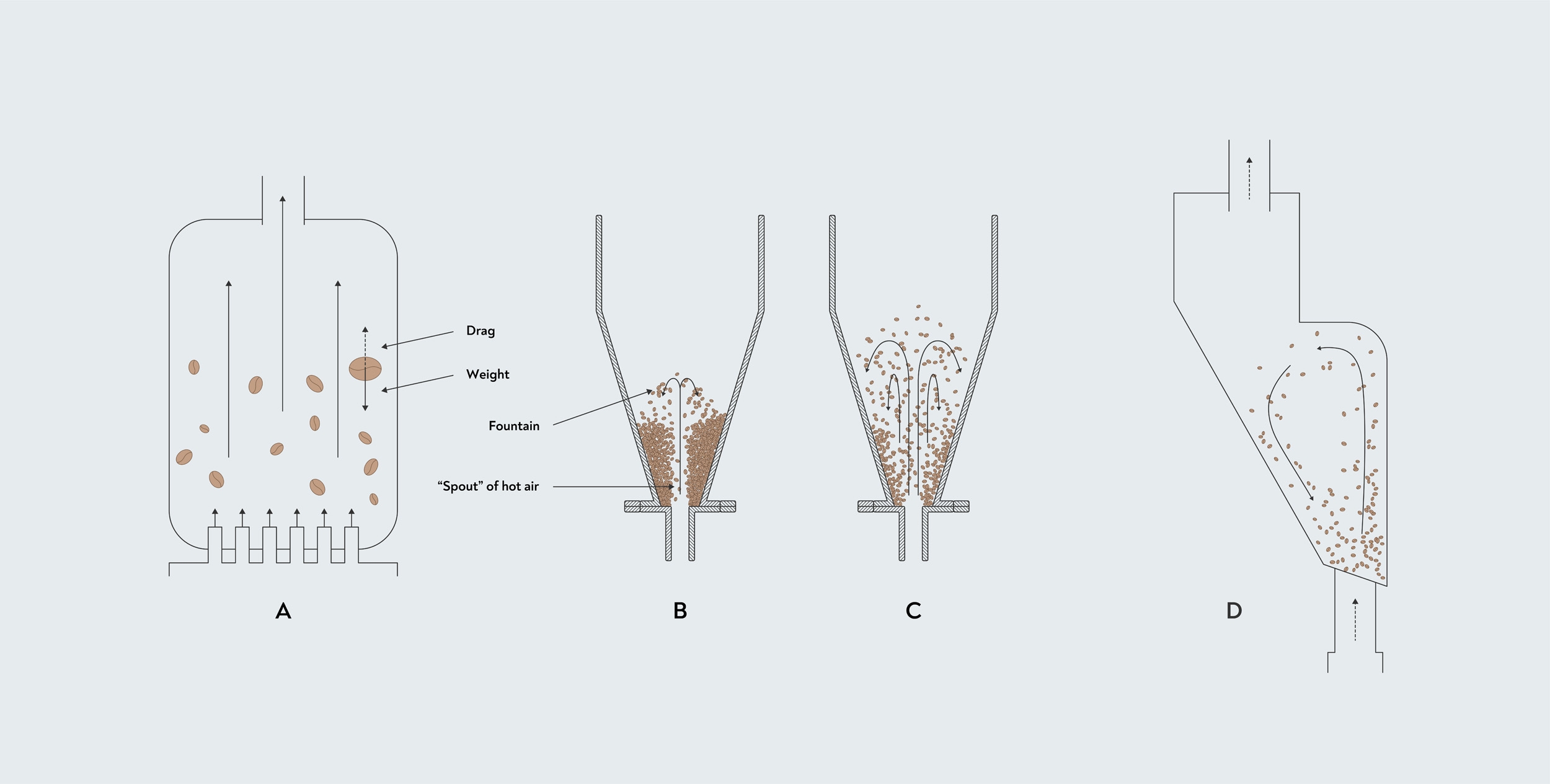A fluid-bed roaster uses airflow to partially or completely fluidise the beans — lifting them up in the stream of air so that they float and are able to behave like a liquid. The beans freely circulate in the air and thereby roast evenly without the need for moving paddles or a rotating drum.
A fluidised bed is made of solid particles (in this case, beans) suspended in an upwards flow of fluid (in this case, roasting gases). The upwards flow of air creates drag (friction) against the beans, which increases with the speed of the airflow. When the airflow is high enough that the drag force becomes equal to the weight of the beans, the whole bed becomes fluidised (RG Holdich 2002).
Strictly speaking, most modern ‘fluid-bed’ roasters are actually spouted beds, wherein only part of the bed is fluidised, because coffee beans are hard to fluidise and a spouted bed promotes better mixing of the beans (Schwartzberg 2002). Spouting also requires less gas than fully fluidising the bed and transfers heat to the beans more efficiently (Eggers and Pietsch 2001).
 Fluidised-bed and spouted-bed designs
Fluidised-bed and spouted-bed designs
The above diagram shows how fluid-bed and spouted-bed roasters work. In a fluidised bed (a), the friction of the air flowing past the beans creates an upwards drag force. When this force is equal to the downwards force from the weight of the beans, the bed becomes fluidised. In a spouted bed (b), only the part of the bed around the spout is fully fluidised, forming a ‘fountain’. Higher air speeds can fluidise more of the bed, but they risk blowing some beans out of the chamber, especially at the end of the roast when the beans have become less dense (c). To overcome this, many roasters feature an asymmetrical design (d) that directs the flow of beans back down into the roasting chamber.
History
People have been applying the principles of fluidisation since ancient times,